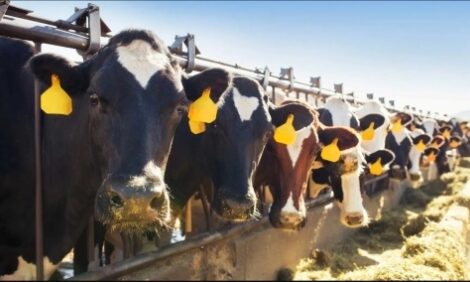



Can Myths over Antimicrobial Resistance be Broken?
ANALYSIS - Consumer perceptions of how livestock is reared for meat have been shaped by misconceptions and misunderstanding, writes Chris Harris.Inflamed by lurid media reports about disease outbreaks, malpractice in the meat and livestock sectors and fears over food safety, many consumers believe that food animals and meat are full of medicines, antibiotics and growth hormones.
According to research by the market analysis group IGD, about 72 per cent of consumers believe that medicines and vaccinations are getting into the food chain.
Speaking at a recent conference organised by the industry body, the National Office for Animal Health, Michael Freedman, (pictured), the IGD Shopper Insight Manager, said: "There is considerable concern that the medicines given to animals are going in to the food chain.
"Seven out of 10 people believe it is and three out of 10 firmly believe it is."
Mr Freedman added that, although there are concerns over the potential for medicines to be entering the food chain, many consumers say they do not like the idea of eating meat from animals that are sick.
He said that people are concerned about issues of cancer, CJD and BSE.
However, very few consumers felt that the best way of dealing with disease in livestock was through culling.
Mr Freedman told the NOAH conference that while the majority of consumers recognised that veterinary medicines are used in the production of livestock for food, most were either not aware or did not understand the difference between their preventative use or their curative use.
When asked if medicines and vaccines should be used to prevent diseases including foot and mouth disease and swine flu, just four out of 10 said they should, although 90 per cent of those questioned felt that there was a need for the use of veterinary medicines in intensive farming.
The survey showed that consumers saw a need for more intensive farming practices because of the growing world population and the need to meet the growing demand for food, but they also believe that farmers are being forced to more intensive practices.
Part of this shaping of the consumer attitude to farming practices comes from the television and media, which are shaping opinions.
"Images are very powerful in the consumers' minds and the images are long lasting," said Mr Freedman.
Of all the concerns about farming practices and livestock rearing, the living conditions and welfare of the animals come top of the list, which the use of medicines comes lower down.
However, although the use of growth hormones on UK and European farms has been banned since the 1980s, seven out of 10 consumers still believe they are used as common practice to accelerate the growth of meat and among the top questions asked by consumers about how their food is raised concerns the use of growth promoters.
Although farming in the UK and British farmers have a positive image among consumers. And most believe the UK is an animal friendly nation, few know about or understand the testing regimes that animals and carcases undergo to ensure that there are nor antibiotic or veterinary medicine residues in the food.
The main consumer concerns still revolve around price and they are worried about their living standards. Although they are looking to save money on food, consumers are still taking the welfare of animals that are raised for meat into account.
When it comes to concerns ov er antibiotic resistance the majority of people - three quarters of those interviewed felt that antibiotics are becoming less effective and the majority believe that the reason is because of their use in animals.
"Consumers are highly aware of the use of medicines and vaccinations for animals, but being aware does not mean they understand," Mr Freedman said.
"Consumers believe that medicines are more necessary in more intensive farming rather than in extensive farming.
"They are hungry to find out about food production and the industry needs not only to put consumers first but it needs to connect with consumers," Mr Freedman added.
Prof Stuart Reid, the principal of the Royal Veterinary College said that there is a perception that animals have more to do with antimicrobial resistance than humans.
But he said that antimicrobial resistance is in the environment from the bacteria in the soil and the bacterial have been developing longer and faster than antimicrobials.
However, he warned that unless scientific community gets to grips with antimicrobial resistance, the population could revert back to the resistance to disease that was seen in the 19th century.
He warned that research has shown that there is more transmission of microbes between humans than there is between animals and humans and the human population of microbes is much more diverse than those in the animal population.
He said the scientific community has to understand what is going on in the environment, what is going on in the food chain and what is going on in imported foods.
And he concluded that antibiotics cannot just be used freely without restriction an d the community should not be focusing on the animal population as a means of controlling antimicrobial resistance.
He said the FAO devised One Health system that looks at the pathogen, the environment and the host on an institutional, social and technical scientific level will be the root to control resistance and the use of antimicrobials.



